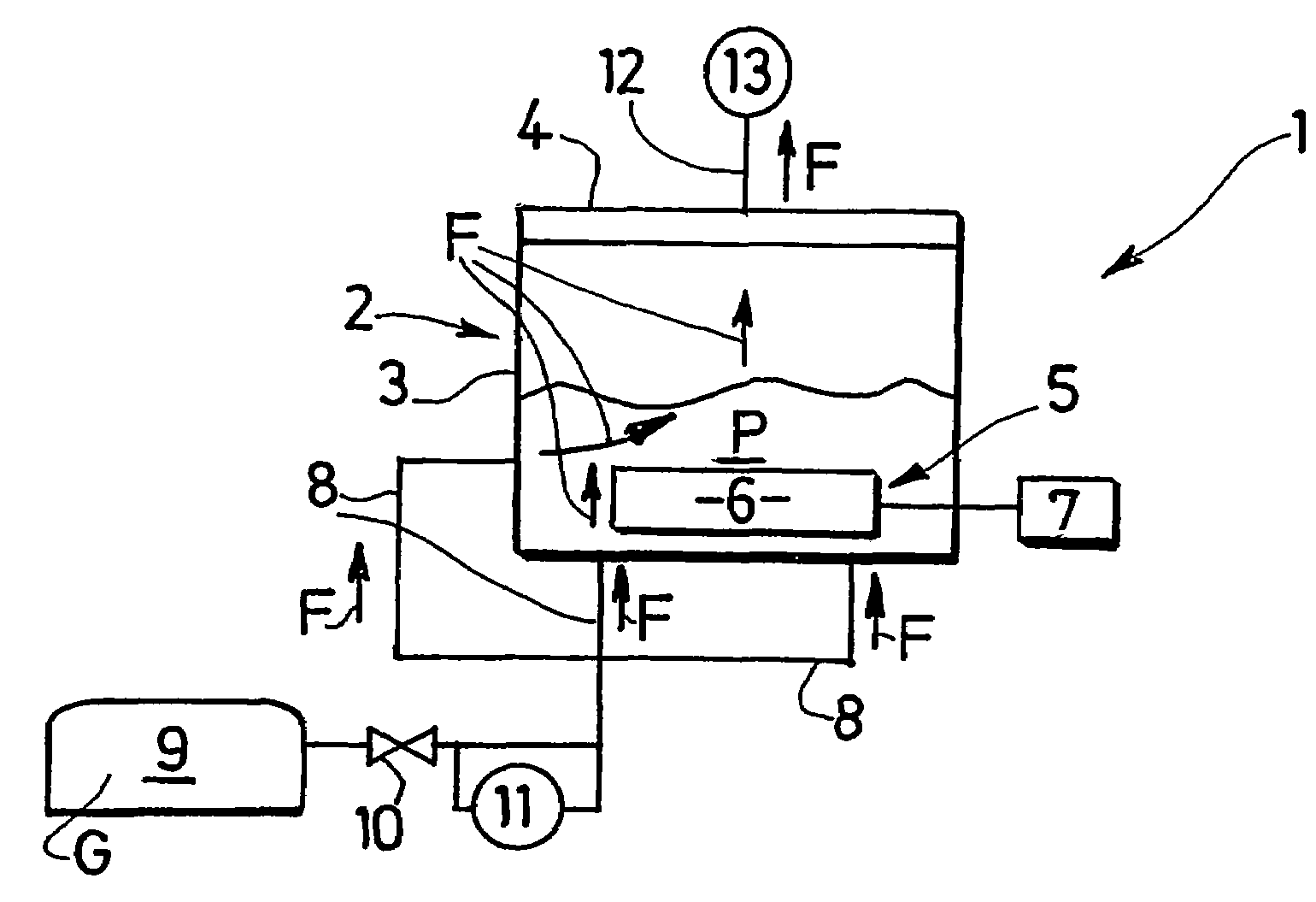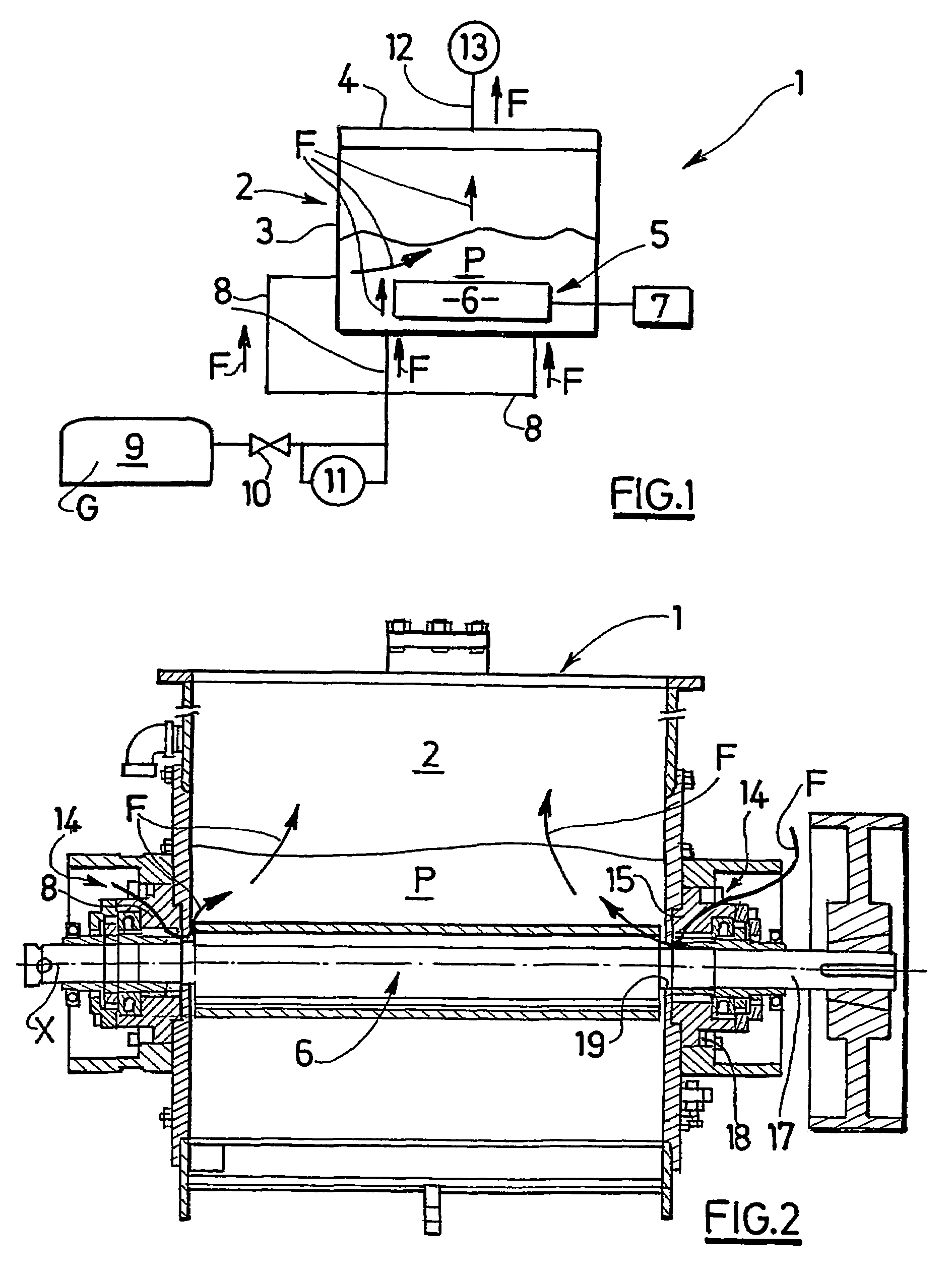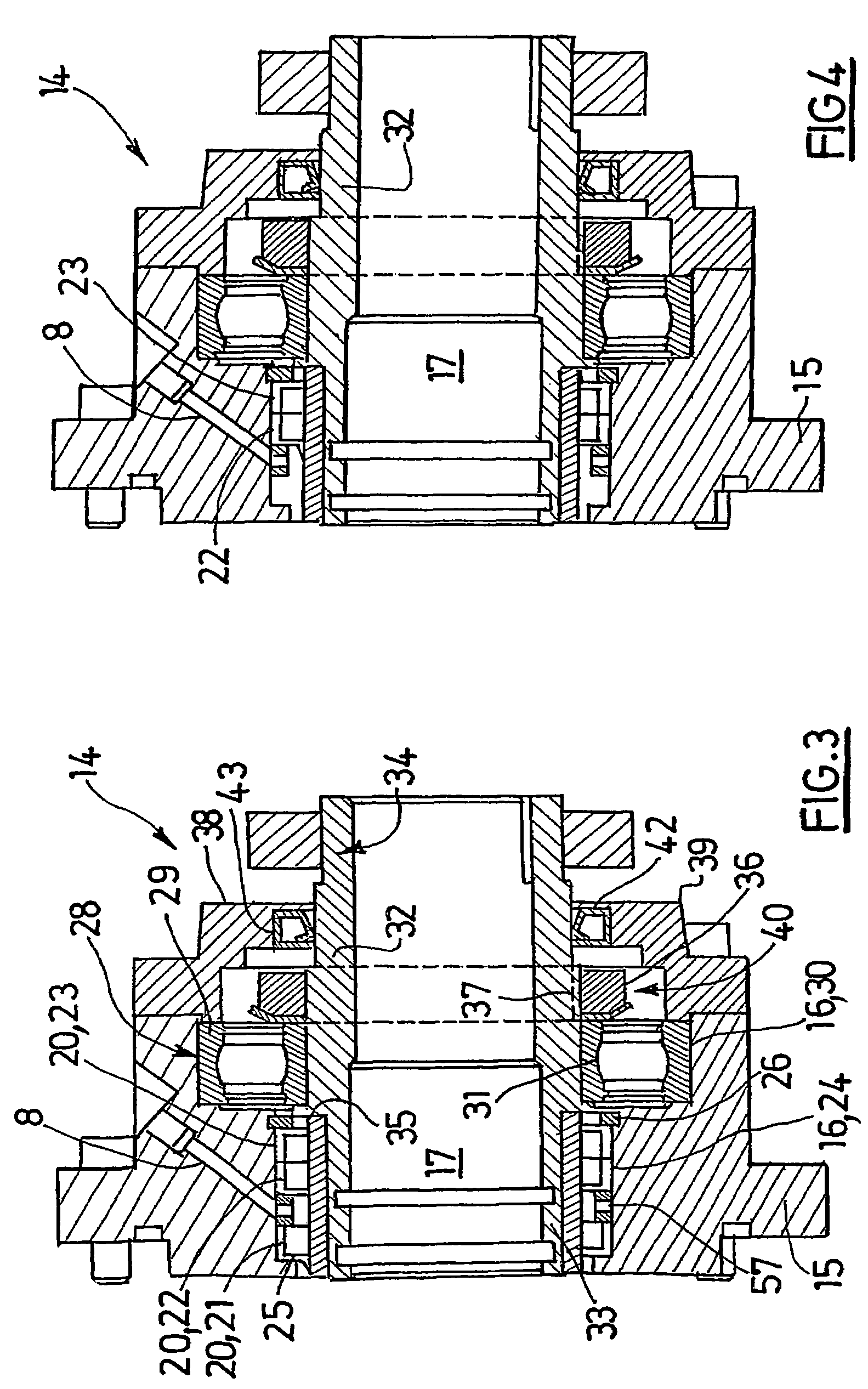Vacuum kneading method with the introduction of oxygen and the device used to carry out said method
a vacuum kneading and oxygen-injected technology, which is applied in the directions of dough mixing/kneading machines, food preservation, baking, etc., can solve the problems of two kneading phases, reduce the oxidation of the improvers used by bakers, and not be able to control the development of the bubble structure in the bread dough
- Summary
- Abstract
- Description
- Claims
- Application Information
AI Technical Summary
Benefits of technology
Problems solved by technology
Method used
Image
Examples
first embodiment
[0076]In a first embodiment, with reference to FIGS. 2 to 4, the axis X of the rotor 6 is horizontal and the fixing and sealed guidance of the rotor 6 with respect to the said vessel 3 are achieved by means of bearings 14.
[0077]One of the bearings 14 is now described in detail, assuming the two bearings to be identical.
[0078]The bearing 14 comprises a bearing body 15 which has a through central recess 16 called a seat, having symmetry of revolution, and in which an end part 17 of the rotor 6 is inserted.
[0079]The bearing body 15 is fixed to a side wall of the vessel 3 on the external side, by means of removable fixing means 18 such as screws regularly distributed over the circumference of the bearing body 15.
[0080]The bearing body 15 is fixed in line with an opening 19 formed in the said side wall of the vessel 3, so that the axis of revolution of the seat 16 coincides with the rotation axis X of the rotor 6.
[0081]The bearing 14 is designed to provide a total seal of the inside of t...
second embodiment
[0113]In a second embodiment, with reference to FIG. 5, the device is such that the axis X of the rotor 6 is horizontal and the vessel 3 is asymmetric with respect to a vertical plane P1 passing through the rotation axis X of the rotor.
[0114]The vessel comprises a first substantially vertical side wall 45 and a second side wall 46 inclined by a given angle to the vertical.
[0115]The curved vessel bottom connects the first wall 45 to the second side wall 46, so that the vessel 3 comprises, on the same side as the second side wall 46, a space 47 opening out towards the top in the form of a crescent.
[0116]This space 47 is situated between the second side wall 46 and the path followed by the free end of the rotor 6 blades. This path is represented by the curve C in FIG. 5.
[0117]The gas supply means 8 open out in the said space 47, outside the passage area of the rotor 6 blades, and are thus easily accessible.
[0118]A particular arrangement of the walls 45, 46 of the vessel 3 is described ...
PUM
| Property | Measurement | Unit |
|---|---|---|
| pressure | aaaaa | aaaaa |
| pressure | aaaaa | aaaaa |
| absolute pressure | aaaaa | aaaaa |
Abstract
Description
Claims
Application Information
 Login to View More
Login to View More - R&D
- Intellectual Property
- Life Sciences
- Materials
- Tech Scout
- Unparalleled Data Quality
- Higher Quality Content
- 60% Fewer Hallucinations
Browse by: Latest US Patents, China's latest patents, Technical Efficacy Thesaurus, Application Domain, Technology Topic, Popular Technical Reports.
© 2025 PatSnap. All rights reserved.Legal|Privacy policy|Modern Slavery Act Transparency Statement|Sitemap|About US| Contact US: help@patsnap.com



